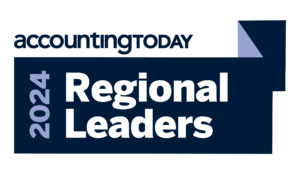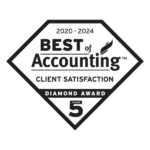Former office assistant Kami Elois Power was indicted in January with allegations of embezzling over $1.4 million between 2019 and 2023 from the family-owned construction company for which she had worked.
Power had previously served time in prison around the turn of the century related to a prior embezzlement of more than $700,000. Within the new indictment, the U.S. Department of Justice has alleged that:
- Over $700,000 in fraudulent transfers were disguised as part of a billing scheme involving supposed payments to vendors the company worked with, using fake profiles created in the names of real companies and fictitious companies with names that used some version of Power’s initials: “KEP Inc. Sale” and “KPI.”
- Additional fraudulent transfers were masked as payroll and expense reimbursement payments.
- Unauthorized personal purchases were made using the company’s credit card; and balances due on Power’s personal credit cards were paid down with company funds.
- Stolen money was used to buy property, luxury cars, ATVs, and a horse.
According to the Association of Certified Fraud Examiners’ (ACFE) most recent biennial study, Occupational Fraud 2024: A Report to the Nations, the construction industry ranked fourth in per case median occupational fraud losses among the more than 20 industries included in the study, with a per case median loss of $250,000. Occupational fraud includes fraud committed by employees against the organization that employs them. Only mining, wholesale trade, and manufacturing had higher median per case losses.
Fraud committed by employees, no matter the industry, can take many forms, such as asset misappropriation, corruption, and fraudulent reporting. However, the complexity and high value of construction projects often make them particularly vulnerable to fraudulent activities. The financial impacts can harm an organization’s ability to thrive and operate profitably.
Asset Misappropriation
Employee fraud cases often encompass multiple types of asset misappropriation. The ACFE reported that the most common asset misappropriation occupational fraud schemes within the construction industry cases in their 2024 study were:
- Billing schemes, such as an employee submitting invoices for payment for goods not received or services not rendered, as is alleged in Power’s case above, or with inflated amounts (38% of cases)
- Noncash schemes, where an employee steals or misuses noncash assets, such as equipment or construction materials (25% of cases)
- Expense reimbursement schemes, such as submitting for reimbursement of expenses not actually incurred, expenses that are not work-related (e.g., worker’s compensation medical expenses from a personal injury incurred while moonlighting over the weekend), or expenses submitted multiple times (25% of cases)
- Payroll schemes, where an employee makes false claims for compensation, such as claiming to have worked more than actual hours worked, entering unapproved pay rate increases, or making payroll payments to individuals who haven’t worked for the company (23% of cases)
- Cash skimming, such as an employee personally taking cash from a customer for work completed through their employer or stealing an incoming check intended for their employer (23% of cases)
Corruption
Corruption is another broad area of employee fraud within the construction industry. Corruption can include schemes like bribery (e.g., bid rigging and payments to inspectors or government officials to overlook violations or expedite approvals) and conflicts of interest.
Fraudulent Reporting
Fraudulent reporting occurs when an employee intentionally fabricates or omits material information within reporting (e.g., within financial statements to help meet loan covenants or misrepresenting how loan proceeds were used to match a prior agreement).
Fraud Prevention and Detection
Employee fraud risk at construction companies differ depending on a variety of factors, such as its size and types of projects. However, no construction organization is immune to fraud, and all have finite resources to prevent and detect fraud. The following four activities are examples of components that a construction organization can leverage to help manage fraud risk:
- Background checks: For the cases analyzed within the ACFE’s 2024 study, 43% were reported to not have had background checks, including criminal checks, completed on the employee who committed fraud. Although background checks won’t identify all prior fraudulent activity a person has committed, it is a good opportunity to identify former convictions. As for Power’s case above, a pre-employment background check could have identified her prior embezzlement. That awareness could have influenced the decision to place Power in a position of trust over company funds. If the company still decided to place Power in this position, leadership may have found it prudent to enhance internal controls knowing Power’s history.
- Fraud risk assessments: These assessments can help an organization proactively identify vulnerabilities and prioritize fraud prevention and detection efforts across employee and third-party fraud risks. The ACFE reported in its 2024 study that those organizations detected occupational fraud eight months sooner and experienced 47% lower median per case losses.
- Data monitoring: Those organizations in the ACFE’s study that proactively monitored data discovered occupational frauds 50% sooner and incurred 50% lower median per case losses. Insights gained from fraud risk assessments can help prioritize proactive data monitoring efforts to maximize an organization’s return on investment for fraud prevention and detection.
- Hotlines: Even with data monitoring, employees and external sources (e.g., customers, vendors, and competitors) play a critical role in helping an organization prevent and detect fraud. The ACFE’s study found that the organizations with hotlines had detected fraud 12 months sooner and experienced 50% lower median fraud losses.
Employee fraud poses a significant threat to construction organizations, with the potential to cause substantial financial losses. By understanding the various forms of occupational fraud — asset misappropriation, corruption, and fraudulent reporting — construction organizations can more effectively mitigate these risks.
Of course, construction companies face fraud risks not just from their own employees, but also in their dealings with customers, sub-contractors, suppliers, and vendors. Implementing proactive measures such as background checks, fraud risk assessments, data monitoring, and fraud hotlines can significantly reduce the likelihood and impact of fraud.
If you have any questions or concerns regarding fraud, please contact our team at [email protected].
About Schneider Downs Construction Services
Led by a diverse group of shareholders and managers, Schneider Downs provides strategic and practical solutions for our construction clients in all facets of their business. Our dedicated team of more than 350 professionals have a wide background of tax, accounting, technological and business experience in the region, specifically in Pittsburgh and Columbus.
To learn more, visit our Construction Industry Group page.





